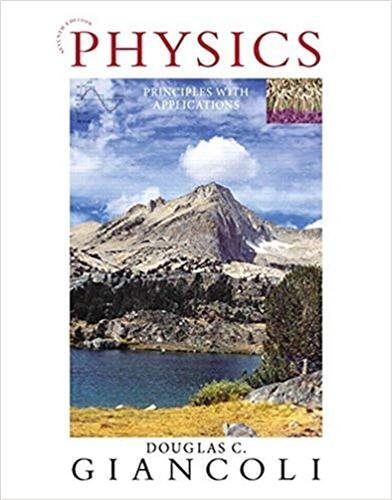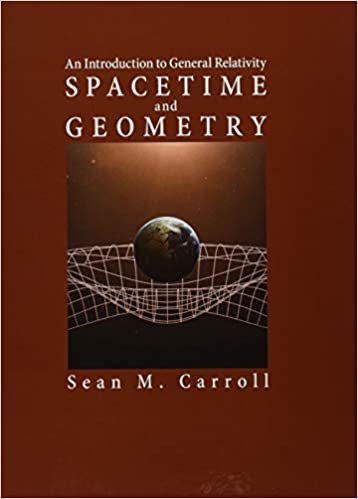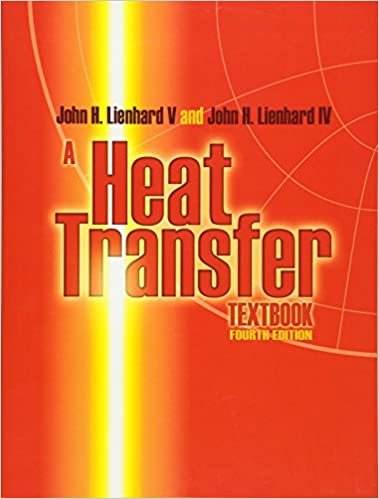Physics: Principles with Applications 7th Edition by Douglas Giancoli, ISBN-13: 978-0321625922
Original price was: $50.00.$14.99Current price is: $14.99.
Physics: Principles with Applications 7th Edition by Douglas Giancoli, ISBN-13: 978-0321625922
[PDF eBook eTextbook]
- Publisher: Pearson; 7th edition (June 6, 2013)
- Language: English
- 1088 pages
- ISBN-10: 0321625927
- ISBN-13: 978-0321625922
Table of Contents:
Physics Principles with Applications
Contents
Applications to Biology and Medicine (Selected)
Applications to Other Fields and Everyday Life (Selected)
Student Supplements
Preface
What’s New?
See the World through Eyes that Know Physics
About the Author
To Students
Chapter 1 Introduction, Measurement, Estimating
Contents
Chapter-Opening Questions—Guess now!
1–1 The Nature of Science
1–2 Physics and its Relation to Other Fields
1–3 Models, Theories, and Laws
1–4 Measurement and Uncertainty; Significant Figures
Uncertainty
Conceptual Example 1–1 Is the diamond yours?
Response
Significant Figures
Exercise A
Exercise B
Conceptual Example 1–2 Significant figures.
Response
Note
Scientific Notation
Exercise C
*Percent Uncertainty vs. Significant Figures
Approximations
Accuracy vs. Precision
1–5 Units, Standards, and the SI System
Length
Time
Mass
Unit Prefixes
Systems of Units
*Base vs. Derived Quantities
1–6 Converting Units
Example 1–3 The 8000-m peaks.
Approach
Solution
Note
Example 1–4 Apartment area.
Approach
Solution
Note
Example 1–5 Speeds.
Approach
Solution
Note
Exercise D
Exercise E
1–7 Order of Magnitude: Rapid Estimating
Example 1–6 Estimate Volume of a lake.
Approach
Solution
Note
Example 1–7 Estimate Thickness of a sheet of paper.
Approach
Solution
Example 1–8 Estimate Height by triangulation.
Approach
Solution
A Harder Example—But Powerful
Example 1–9 Estimate Estimating the radius of Earth.
Approach
Solution
Note
Exercise F
*1–8 Dimensions and Dimensional Analysis
Summary
Questions
MisConceptual Questions
Problems
1–4 Measurement, Uncertainty, Significant Figures
1–5 and 1–6 Units, Standards, SI, Converting Units
1–7 Order-of-Magnitude Estimating
*1–8 Dimensions
General Problems
Search and Learn
Chapter 2 Describing Motion: Kinematics in One Dimension
Contents
Chapter-Opening Question—Guess now!
2–1 Reference Frames and Displacement
Exercise A
2–2 Average Velocity
Example 2–1 Runner’s average velocity.
Approach
Solution
Example 2–2 Distance a cyclist travels.
Approach
Solution
Example 2–3 Car changes speed.
Approach
Solution
Note
2–3 Instantaneous Velocity
Exercise B
2–4 Acceleration
Example 2–4 Average acceleration.
Approach
Solution
Conceptual Example 2–5 Velocity and acceleration.
Response
Example 2–6 Car slowing down.
Approach
Solution
Deceleration
Exercise C
2–5 Motion at Constant Acceleration
Example 2–7 Runway design.
Approach
Solution
Note
Exercise D
2–6 Solving Problems
Example 2–8 Acceleration of a car.
Approach
Solution
Note
Example 2–9 Estimate Braking distances.
Approach
Solution
Note
2–7 Freely Falling Objects
Exercise E
Example 2–10 Falling from a tower.
Approach
Solution
Note
Example 2–11 Thrown down from a tower.
Approach
Solution
Note
Example 2–12 Ball thrown upward.
Approach
Solution
Example 2–13 Ball thrown upward, II.
Approach
Solution
Note
Conceptual Example 2–14 Two possible misconceptions.
Response
Example 2–15 Ball thrown upward, III.
Approach
Solution
Note
Exercise F
Additional Example—Using the Quadratic Formula
Example 2–16 Ball thrown upward at edge of cliff.
Approach
Solution
2–8 Graphical Analysis of Linear Motion
Velocity as Slope
Slope and Acceleration
Conceptual Example 2–17 Analyzing with graphs.
Response
Summary
Questions
MisConceptual Questions
Problems
2–1 to 2–3 Speed and Velocity
2–4 Acceleration
2–5 and 2–6 Motion at Constant Acceleration
2–7 Freely Falling Objects (neglect air resistance)
2–8 Graphical Analysis
General Problems
Search and Learn
Chapter 3 Kinematics in Two Dimensions; Vectors
Contents
Chapter-Opening Question—Guess now!
3–1 Vectors and Scalars
3–2 Addition of Vectors–-Graphical Methods
Conceptual Example 3–1 Range of vector lengths.
Response
Exercise A
3–3 Subtraction of Vectors, and Multiplication of a Vector by a Scalar
Exercise B
3–4 Adding Vectors by Components
Components
Adding Vectors
Example 3–2 Mail carrier’s displacement.
Approach
Solution
Note
Adding Vector
Example 3–3 Three short trips.
Approach
Solution
3–5 Projectile Motion
Exercise C
Exercise D
Conceptual Example 3–4 Where does the apple land?
Response
Exercise E
3–6 Solving Projectile Motion Problems
Projectile Motion
Example 3–5 Driving off a cliff.
Approach
Solution
Note
Example 3–6 A kicked football.
Approach
Solution
Note
Exercise F
Conceptual Example 3–7 The wrong strategy.
Response
Level Horizontal Range
Example 3–8 Range of a cannon ball.
Approach
Solution
Example 3–9 A punt.
Approach
Solution
*3–7 Projectile Motion Is Parabolic
3–8 Relative Velocity
Example 3–10 Heading upstream.
Approach
Solution
Example 3–11 Heading across the river.
Approach
Solution
Note
Summary
Questions
MisConceptual Questions
Problems
3–2 to 3–4 Vector Addition
3–5 and 3–6 Projectile Motion (neglect air resistance)
3–8 Relative Velocity
General Problems
Search and Learn
Chapter 4 Dynamics: Newton’s Laws of Motion
Contents
Chapter-Opening Questions—Guess now!
4–1 Force
4–2 Newton’s First Law of Motion
Conceptual Example 4–1 Newton’s first law.
Response
Inertial Reference Frames
4–3 Mass
4–4 Newton’s Second Law of Motion
Example 4–2 Estimate Force to accelerate a fast car.
Approach
Solution
Example 4–3 Force to stop a car.
Approach
Solution
Note
Exercise A
4–5 Newton’s Third Law of Motion
Conceptual Example 4–4 What exerts the force to move a car?
Response
Conceptual Example 4–5 Third law clarification.
Response
Exercise B
Exercise C
Exercise D
4–6 Weight—the Force of Gravity; and the Normal Force
Exercise E
Example 4–6 Weight, normal force, and a box.
Approach
Solution
Note
Example 4–7 Accelerating the box.
Approach
Solution
Example 4–8 Apparent weight loss.
Approach
Solution
Note
4–7 Solving Problems with Newton’s Laws: Free-Body Diagrams
Example 4–9 Adding force vectors.
Approach
Solution
Conceptual Example 4–10 The hockey puck.
Response
Newton’s Laws; Free-Body Diagrams
Example 4–11 Pulling the mystery box.
Approach
Solution
Note
Exercise F
Tension in a Flexible Cord
Example4–12 Two boxes connected by a cord.
Approach
Solution
Note
Example 4–13 Elevator and counterweight (Atwood machine).
Approach
Solution
Note
Conceptual Example 4–14 The advantage of a pulley.
Response
Note
Example 4–15 Accelerometer.
Approach
Solution
Note
4–8 Problems Involving Friction, Inclines
Friction
Example 4–16 Friction: static and kinetic.
Approach
Solution
Conceptual Example 4–17 A box against a wall.
Response
Exercise G
Example 4–18 Pulling against friction.
Approach
Solution
Note
Conceptual Example 4–19 To push or to pull a sled?
Response
Example 4–20 Two boxes and a pulley.
Approach
Solution
Note
Inclines
Exercise H
Example 4–21 The skier.
Approach
Solution
Note
Summary
Questions
MisConceptual Questions
Problems
4–4to4–6 Newton’s Laws, Gravitational Force, Normal Force [Assume no friction.]
4–7 Newton’s Laws and Vectors [Ignore friction.]
4–8 Newton’s Laws with Friction, Inclines
General Problems
Search and Learn
Chapter 5 Circular Motion; Gravitation
Contents
Chapter-Opening Questions—Guess now!
5–1 Kinematics of Uniform Circular Motion
Example 5–1 Acceleration of a revolving ball.
Approach
Solution
Exercise A
Example 5–2 Moon’s centripetal acceleration.
Approach
Solution
Note
5–2 Dynamics of Uniform Circular Motion
Exercise B
Example 5–3 Estimate Force on revolving ball (horizontal).
Approach
Solution
Note
Example 5–4 Revolving ball (vertical circle).
Approach
Solution
Exercise C
Conceptual Example 5–5 Tetherball.
Response
Uniform Circular Motion
5–3 Highway Curves: Banked and Unbanked
Example 5–6 Skidding on a curve.
Approach
Solution
Exercise D
Example 5–7 Banking angle.
Approach
Solution
*5–4 Nonuniform Circular Motion
Example 5–8 Two components of acceleration.
Approach
Solution
Note
5–5 Newton’s Law of Universal Gravitation
Example 5–9 Estimate Can you attract another person gravitationally?
Approach
Solution
Example 5–10 Spacecraft at 2rE.
Approach
Solution
5–6 Gravity Near the Earth’s Surface
Example 5–11 Estimate Gravity on Everest.
Approach
Solution
Exercise E
5–7 Satellites and “Weightlessness”
Satellite Motion
Example 5–12 Geosynchronous satellite.
Approach
Solution
Weightlessness
Exercise F
5–8 Planets, Kepler’s Laws, and Newton’s Synthesis
Kepler’s Laws
Example 5–13 Where is Mars?
Approach
Solution
Kepler’s Third Law Derived, Sun’s Mass, Perturbations
Example 5–14 The Sun’s mass determined.
Approach
Solution
Other Centers for Kepler’s Laws
Distant Planetary Systems
Newton’s Synthesis
Sun/Earth Reference Frames
5–9 Moon Rises an Hour Later Each Day
5–10 Types of Forces in Nature
Summary
Questions
MisConceptual Questions
Problems
5–1 to 5–3 Uniform Circular Motion
*5–4 Nonuniform Circular Motion
5–5 and 5–6 Law of Universal Gravitation
5–7 Satellites and Weightlessness
5–8 Kepler’s Laws
General Problems
Search and Learn
Chapter 6 Work and Energy
Contents
Chapter-Opening Question—Guess now!
6–1 Work Done by a Constant Force
Example 6–1 Work done on a crate.
Approach
Solution
Exercise A
Work
Example 6–2 Work on a backpack.
Approach
Solution
Note
Note
Conceptual Example 6–3 Does the Earth do work on the Moon?
Response
*6–2 Work Done by a Varying Force
6–3 Kinetic Energy, and the Work-Energy Principle
Example 6–4 Estimate Work on a car, to increase its kinetic energy.
Approach
Solution
Exercise B
Conceptual Example 6–5 Work to stop a car.
Response
Exercise C
Exercise D
6–4 Potential Energy
Gravitational Potential Energy
Example 6–6 Potential energy changes for a roller coaster.
Approach
Solution
Note
Potential Energy Defined in General
Potential Energy of Elastic Spring
Potential Energy as Stored Energy
6–5 Conservative and Nonconservative Forces
Exercise E
Work-Energy Extended
6–6 Mechanical Energy and Its Conservation
6–7 Problem Solving Using Conservation of Mechanical Energy
Example 6–7 Falling rock.
Approach
Solution
Note
Example 6–8 Roller-coaster car speed using energy conservation.
Approach
Solution
Conceptual Example 6–9 Speeds on two water slides.
Response
Example 6–10 Toy dart gun.
Approach
Solution
Example 6–11 Two kinds of potential energy.
Approach
Solution
6–8 Other Forms of Energy and Energy Transformations; The Law of Conservation of Energy
6–9 Energy Conservation with Dissipative Forces: Solving Problems
Exercise F
Work-Energy versus Energy Conservation
Conservation of Energy
Example 6–12 Estimate Friction on the roller-coaster car.
Approach
Solution
Note
6–10 Power
Example 6–13 Stair-climbing power.
Approach
Solution
Note
Example 6–14 Power needs of a car.
Approach
Solution
Note
Summary
Questions
MisConceptual Questions
Problems
6–1 Work, Constant Force
*6–2 Work, Varying Force
6–3 Kinetic Energy; Work-Energy Principle
6–4 and 6–5 Potential Energy
6–6 and 6–7 Conservation of Mechanical Energy
6–8 and 6–9 Law of Conservation of Energy
6–10 Power
General Problems
Search and Learn
Chapter 7 Linear Momentum
Contents
Chapter-Opening Questions—Guess now!
7–1 Momentum and Its Relation to Force
Exercise A
Example 7–1 Estimate Force of a tennis serve.
Approach
Solution
Note
Note
Example 7–2 Washing a car: momentum change and force.
Approach
Solution
Note
Exercise B
7–2 Conservation of Momentum
Example 7–3 Railroad cars collide: momentum conserved.
Approach
Solution
Note
Note
Exercise C
Exercise D
Conceptual Example 7–4 Falling on or off a sled.
Response
Example 7–5 Rifle recoil.
Approach
Solution
Exercise E
7–3 Collisions and Impulse
Exercise F
Example 7–6 Estimate Karate blow.
Approach
Solution
7–4 Conservation of Energy and Momentum in Collisions
7–5 Elastic Collisions in One Dimension
Example 7–7 Equal masses.
Approach
Solution
Note
Example 7–8 A nuclear collision.
Approach
Solution
Note
7–6 Inelastic Collisions
Example 7–9 Ballistic pendulum.
Approach
Solution
Note
Example 7–10 Railroad cars again.
Approach
Solution
*7–7 Collisions in Two Dimensions
Example 7–11 Billiard ball collision in 2-D.
Approach
Solution
Momentum Conservation and Collisions
7–8 Center of Mass (CM)
Example 7–12 CM of three guys on a raft.
Approach
Solution
Exercise G
*7–9 CM for the Human Body
Example 7–13 A leg’s CM.
Approach
Solution
Note
*7–10 CM and Translational Motion
Conceptual Example 7–14 A two-stage rocket.
Response
Note
Exercise H
Summary
Questions
MisConceptual Questions
Problems
7–1 and 7–2 Momentum and Its Conservation
7–3 Collisions and Impulse
7–4 and 7–5 Elastic Collisions
7–6 Inelastic Collisions
*7–7 Collisions in Two Dimensions
7–8 Center of Mass (CM)
*7–9 CM for the Human Body
*7–10 CM and Translational Motion
General Problems
Search and Learn
Chapter 8 Rotational Motion
Contents
Chapter-Opening Question—Guess now!
8–1 Angular Quantities
Example 8–1 Bike wheel.
Approach
Solution
Example 8–2 Birds of prey—in radians.
Approach
Solution
Note
Conceptual Example 8–3 Is the lion faster than the horse?
Response
Example 8–4 Angular and linear velocities.
Approach
Solution
Example 8–5 Angular and linear accelerations.
Approach
Solution
Note
Note
Exercise A
8–2 Constant Angular Acceleration
Example 8–6 Centrifuge acceleration.
Approach
Solution
Note
8–3 Rolling Motion (Without Slipping)
Example 8–7 Bicycle.
Approach
Solution
Note
8–4 Torque
Example 8–8 Biceps torque.
Approach
Solution
Note
Exercise B
*Forces that Act to Tilt the Axis
8–5 Rotational Dynamics; Torque and Rotational Inertia
Example 8–9 Two weights on a bar: different axis, different I.
Approach
Solution
Note
8–6 Solving Problems in Rotational Dynamics
Rotational Motion
Example 8–10 A heavy pulley.
Approach
Solution
Additional Example—a bit more challenging
Example 8–11 Pulley and bucket.
Approach
Solution
Note
8–7 Rotational Kinetic Energy
Example 8–12 Sphere rolling down an incline.
Approach
Solution
Note
Conceptual Example 8–13 Which is fastest?
Response
Note
Exercise C
Work Done by Torque
8–8 Angular Momentum and Its Conservation
Exercise D
Example 8–14 Clutch.
Approach
Solution
Example 8–15 Estimate Neutron star.
Approach
Solution
*8–9 Vector Nature of Angular Quantities
Conceptual Example 8–16 Spinning bicycle wheel.
Response
Exercise E
Exercise F
Summary
Questions
MisConceptual Questions
Problems
8–1 Angular Quantities
8–2 and 8–3 Constant Angular Acceleration; Rolling
8–4 Torque
8–5 and 8–6 Rotational Dynamics
8–7 Rotational Kinetic Energy
8–8 Angular Momentum
*8–9 Angular Quantities as Vectors
General Problems
Search and Learn
Chapter 9 Static Equilibrium; Elasticity and Fracture
Contents
Chapter-Opening Question—Guess now!
9–1 The Conditions for Equilibrium
Example 9–1 Straightening teeth.
Approach
Solution
Note
The First Condition for Equilibrium
Example 9–2 Chandelier cord tension.
Approach
Solution
Note
Exercise A
The Second Condition for Equilibrium
Conceptual Example 9–3 A lever.
Response
Exercise B
9–2 Solving Statics Problems
Statics
Example 9–4 Balancing a seesaw.
Approach
Solution
Exercise C
Example 9–5 Forces on a beam and supports.
Approach
Solution
Exercise D
Example 9–6 Hinged beam and cable.
Approach
Solution
Note
*A More Difficult Example—The Ladder
Example 9–7 Ladder.
Approach
Solution
Note
9–3 Applications to Muscles and Joints
Example 9–8 Force exerted by biceps muscle.
Approach
Solution
Note
Note
Example 9–9 Forces on your back.
Approach
Solution
Note
9–4 Stability and Balance
9–5 Elasticity; Stress and Strain
Elasticity and Hooke’s Law
Young’s Modulus
Example 9–10 Tension in piano wire.
Approach
Solution
Note
Exercise E
Stress and Strain
Tension, Compression, and Shear Stress
Volume Change—Bulk Modulus
9–6 Fracture
Example 9–11 Estimate Breaking the piano wire.
Approach
Solution
Conceptual Example 9–12 A tragic substitution.
Response
*9–7 Spanning a Space: Arches and Domes
Example 9–13 A modem dome.
Approach
Solution
Note
Summary
Questions
MisConceptual Questions
Problems
9–1 and 9–2 Equilibrium
9–3 Muscles and Joints
9–4 Stability and Balance
9–5 Elasticity; Stress and Strain
9–6 Fracture
*9–7 Arches and Domes
General Problems
Search and Learn
Chapter 10 Fluids
Contents
Chapter-Opening Questions—Guess now!
10–1 Phases of Matter
10–2 Density and Specific Gravity
Example 10–1 Mass, given volume and density.
Approach
Solution
10–3 Pressure in Fluids
Example 10–2 Calculating pressure.
Approach
Solution
Exercise A
Example 10–3 Pressure at a faucet.
Approach
Solution
NOTE
Exercise B
10–4 Atmospheric Pressure and Gauge Pressure
Atmospheric Pressure
Conceptual Example 10–4 Finger holds water in a straw.
Response
Gauge Pressure
10–5 Pascal’s Principle
10–6 Measurement of Pressure; Gauges and the Barometer
Conceptual Example 10–5 Suction.
RESPONSE
10–7 Buoyancy and Archimedes’ Principle
Conceptual Example 10–6 Two pails of water.
Response
Example 10–7 Recovering a submerged statue.
Approach
Solution
Note
Example 10–8 Archimedes: Is the crown gold?
Approach
Solution
Example 10–9 Hydrometer calibration.
Approach
Solution
Note
Exercise C
Exercise D
Example 10–10 Helium balloon.
Approach
Solution
Note
Conceptual Example 10–11 Throwing a rock overboard.
Response
Exercise E
10–8 Fluids in Motion; Flow Rate and the Equation of Continuity
Example 10–12 Estimate Blood flow.
Approach
Solution
Example 10–13 Heating duct to a room.
Approach
Solution
Note
10–9 Bernoulli’s Equation
Exercise F
Example 10–14 Flow and pressure in a hot-water heating system.
Approach
Solution
Note
10–10 Applications of Bernoulli’s Principle: Torricelli, Airplanes, Baseballs, Blood Flow
Exercise G
Airplane Wings and Dynamic Lift
Sailboats
Baseball Curve
Lack of Blood to the Brain—TIA
Other Applications
*10–11 Viscosity
*10–12 Flow in Tubes: Poiseuille’s Equation, Blood Flow
*10–13 Surface Tension and Capillarity
Example 10–15 Estimate Insect walks on water.
Approach
Solution
Note
*Capillarity
*10–14 Pumps, and the Heart
Summary
Questions
MisConceptual Questions
Problems
10–2 Density and Specific Gravity
10–3 to 10–6 Pressure; Pascal’s Principle
10–7 Buoyancy and Archimedes’ Principle
10–8 to 10–10 Fluid Flow, Bernoulli’s Equation
*10–11 Viscosity
*10–12 Flow in Tubes; Poiseuille’s Equation
*10–13 Surface Tension and Capillarity
*10–14 Pumps; the Heart
General Problems
Search and Learn
Chapter 11 Oscillations and Waves
Contents
Chapter-Opening Questions—Guess now!
11–1 Simple Harmonic Motion—Spring Oscillations
Exercise A
Exercise B
Example 11–1 Car springs.
Approach
Solution
Note
Conceptual Example 11–2 Is the motion simple harmonic?
Response
11–2 Energy in Simple Harmonic Motion
Conceptual Example 11–3 Doubling the amplitude.
Response
Exercise C
Example 11–4 Spring calculations.
Approach
Solution
Note
Example 11–5 Energy calculations.
Approach
Solution
11–3 The Period and Sinusoidal Nature of SHM
Exercise D
Example 11–6 Estimate Spider web.
Approach
Solution
Note
Example 11–7 Estimate A vibrating floor.
Approach
Solution
Note
Period and Frequency—Derivation
Position as a Function of Time
Example 11–8 Starting with x = A cos ωt.
Approach
Solution
Sinusoidal Motion
*Velocity and Acceleration as Functions of Time
11–4 The Simple Pendulum
Exercise E
Exercise F
Example 11–9 Estimate Measuring g.
Approach
Solution
11–5 Damped Harmonic Motion
11–6 Forced Oscillations; Resonance
11–7 Wave Motion
Conceptual Example 11–10 Wave vs. particle velocity.
Response
Exercise G
Exercise H
11–8 Types of Waves and Their Speeds: Transverse and Longitudinal
Speed of Transverse Waves
Example 11–11 Wave along a wire.
Approach
Solution
Note
Speed of Longitudinal Waves
Example 11–12 Echolocation.
Approach
Solution
Note
Other Waves
11–9 Energy Transported by Waves
Example 11–13 Earthquake intensity.
Approach
Solution
Note
Intensity Related to Amplitude and Frequency
11–10 Reflection and Transmission of Waves
11–11 Interference; Principle of Superposition
11–12 Standing Waves; Resonance
Example 11–14 Piano string.
Approach
Solution
Note
*11–13 Refraction†
*11–14 Diffraction
Conceptual Example 11–15 Cell phones.
Response
*11–15 Mathematical Representation of a Traveling Wave
Summary
Questions
MisConceptual Questions
Problems
11–1 to 11–3 Simple Harmonic Motion
11–4 Simple Pendulum
11–7 and 11–8 Waves
11–9 Energy Transported by Waves
11–11 Interference
11–12 Standing Waves; Resonance
*11–13 Refraction
*11–14 Diffraction
General Problems
Search and Learn
Chapter 12 Sound
Contents
Chapter-Opening Question—Guess now!
12–1 Characteristics of Sound
Conceptual Example 12–1 Distance from a lightning strike.
Response
Example 12–2 Autofocusing with sound waves.
Approach
Solution
Note
12–2 Intensity of Sound: Decibels
Sound Level
Example 12–3 Sound intensity on the street.
Approach
Solution
Example 12–4 Loudspeaker response.
Approach
Solution
Note
Exercise A
Conceptual Example 12–5 Trumpet players.
Response
Exercise B
Example 12–6 Airplane roar.
Approach
Solution
Note
Intensity Related to Amplitude
Example 12–7 How tiny the displacement is.
Approach
Solution
Note
*12–3 The Ear and Its Response; Loudness
*The Ear’s Response
12–4 Sources of Sound: Vibrating Strings and Air Columns
Stringed Instruments
Example 12–8 Piano strings.
Approach
Solution
Note
Exercise C
Example 12–9 Frequencies and wavelengths in the violin.
Approach
Solution
Note
Exercise D
Wind Instruments
Example 12–10 Organ pipes.
Approach
Solution
Note
Example 12–11 Flute.
Approach
Solution
Exercise E
Example 12–12 Estimate Wind noise frequencies.
Approach
Solution
Note
*12–5 Quality of Sound, and Noise; Superposition
12–6 Interference of Sound Waves; Beats
Interference in Space
Example 12–13 Loudspeakers’ interference.
Approach
Solution
Note
Beats—Interference in Time
Example 12–14 Beats.
Approach
Solution
12–7 Doppler Effect
Example 12–15 A moving siren.
Approach
Solution
Exercise F
Example 12–16 Two Doppler shifts.
Approach
Solution
Note
Exercise G
Doppler Effect for Light
*12–8 Shock Waves and the Sonic Boom
*12–9 Applications: Sonar, Ultrasound, and Medical Imaging
* Sonar
* Ultrasound Medical Imaging
Summary
Questions
MisConceptual Questions
Problems
12–1 Characteristics of Sound
12–2 Intensity of Sound; Decibels
*12–3 Loudness
12–4 Sources of Sound: Strings and Air Columns
*12–5 Quality of Sound, Superposition
12–6 Interference; Beats
12–7 Doppler Effect
*12–8 Shockwaves; Sonic Boom
General Problems
Search and Learn
Chapter 13 Temperature and Kinetic Theory
Contents
Chapter-Opening Question—Guess now!
13–1 Atomic Theory of Matter
Example 13–1 Estimate Distance between atoms.
Approach
Solution
Note
Note
13–2 Temperature and Thermometers
Temperature Scales
Example 13–2 Taking your temperature.
Approach
Solution
* Standard Temperature Scale
13–3 Thermal Equilibrium and the Zeroth Law of Thermodynamics
*The Zeroth Law of Thermodynamics
13–4 Thermal Expansion
Linear Expansion
Example 13–3 Bridge expansion.
Approach
Solution
Conceptual Example 13–4 Do holes expand or contract?
Response
Example 13–5 Ring on a rod.
Approach
Solution
Note
Conceptual Example 13–6 Opening a tight jar lid.
Response
Volume Expansion
Example 13–7 Gas tank in the Sun.
Approach
Solution
Anomalous Behavior of Water Below 4°C
* Thermal Stresses
13–5 The Gas Laws and Absolute Temperature
Conceptual Example 13–8 Why you should not put a closed glass jar into a campfire.
Response
13–6 The Ideal Gas Law
Exercise A
Exercise B
13–7 Problem Solving with the Ideal Gas Law
Example 13–9 Volume of one mole at STP.
Approach
Solution
Exercise C
Example 13–10 Helium balloon.
Approach
Solution
Example 13–11 Estimate Mass of air in a room.
Approach
Solution
Note
Exercise D
Example 13–12 Check tires cold.
Approach
Solution
Note
13–8 Ideal Gas Law in Terms of Molecules: Avogadro’s Number
Example 13–13 Hydrogen atom mass.
Approach
Solution
Note
Example 13–14 Estimate How many molecules in one breath?
Approach
Solution
13–9 Kinetic Theory and the Molecular Interpretation of Temperature
Example 13–15 Molecular kinetic energy.
Approach
Solution
Note
Exercise E
Example 13–16 Speeds of air molecules.
Approach
Solution
Note
Exercise F
* Kinetic Energy Near Absolute Zero
13–10 Distribution of Molecular Speeds
13–11 Real Gases and Changes of Phase
13–12 Vapor Pressure and Humidity
Evaporation
Vapor Pressure
Boiling
Partial Pressure and Humidity
Example 13–17 Relative humidity.
Approach
Solution
Conceptual Example 13–18 Dryness in winter.
Response
*13–13 Diffusion
Example 13–19 Estimate Diffusion of ammonia in air.
Approach
Solution
Note
Summary
Questions
MisConceptual Questions
Problems
13–1 Atomic Theory
13–2 Temperature and Thermometers
13–4 Thermal Expansion
13–5 Gas Laws; Absolute Temperature
13–6 and 13–7 Ideal Gas Law
13–8 Ideal Gas Law in Terms of Molecules; Avogadro’s Number
13–9 Molecular Interpretation of Temperature
13–11 Real Gases; Phase Changes
13–12 Vapor Pressure and Humidity
*13–13 Diffusion
General Problems
Search and Learn
Chapter 14 Heat
Contents
Chapter-Opening Question—Guess now!
14–1 Heat as Energy Transfer
Example 14–1 Estimate Working off the extra Calories.
Approach
Solution
Note
14–2 Internal Energy
Distinguishing Temperature, Heat, and Internal Energy
Internal Energy of an Ideal Gas
14–3 Specific Heat
Example 14–2 How heat transferred depends on specific heat.
Approach
Solution
Note
Conceptual Example 14–3 A very hot frying pan.
Response
Exercise A
* Specific Heats for Gases
14–4 Calorimetry—Solving Problems
Example 14–4 The cup cools the tea.
Approach
Solution
Note
Note
Example 14–4′ Alternate Solution, ∑Q = 0.
Approach
Solution
Example 14–5 Unknown specific heat determined by calorimetry.
Approach
Solution
Note
Bomb Calorimeter
14–5 Latent Heat
Exercise B
Example 14–6 Making ice.
Approach
Solution
Exercise C
Example 14–7 Estimate Will all the ice melt?
Approach
Solution
Exercise D
Calorimetry
Evaporation
Kinetic Theory of Latent Heats
14–6 Heat Transfer: Conduction
Example 14–8 Heat loss through windows.
Approach
Solution
Note
Exercise E
*R-values for Building Materials
14–7 Heat Transfer: Convection
14–8 Heat Transfer: Radiation
Example 14–9 Estimate Cooling by radiation.
Approach
Solution
Note
Note
Example 14–10 Estimate Two teapots.
Approach
Solution
Note
Example 14–11 Estimate Getting a tan—energy absorption.
Approach
Solution
Note
Example 14–12 Estimate Star radius.
Approach
Solution
Exercise F
Summary
Questions
MisConceptual Questions
Problems
14–1 Heat as Energy Transfer
14–3 and 14–4 Specific Heat; Calorimetry
14–5 Latent Heat
14–6 to 14–8 Conduction, Convection, Radiation
General Problems
Search and Learn
Chapter 15 The Laws of Thermodynamics
Contents
Chapter-Opening Question—Guess now!
15–1 The First Law of Thermodynamics
Example 15–1 Using the first law.
Approach
Solution
Note
Exercise A
*The First Law of Thermodynamics Extended
Example 15–2 Kinetic energy transformed to thermal energy.
Approach
Solution
Note
15–2 Thermodynamic Processes and the First Law
Isothermal Processes (ΔT = 0)
Adiabatic Processes (Q = 0)
Isobaric and Isovolumetric Processes
Work Done in Volume Changes
Conceptual Example 15–3 Work in isothermal and adiabatic processes.
Response
Exercise B
Example 15–4 First law in isobaric and isovolumetric processes.
Approach
Solution
Exercise C
Example 15–5 Work done in an engine.
Approach
Solution
Example 15–6 ΔU for boiling water to steam.
Approach
Solution
Note
Note
*15–3 Human Metabolism and the First Law
Example 15–7 Energy transformation in the body.
Approach
Solution
Note
15–4 The Second Law of Thermodynamics—Introduction
15–5 Heat Engines
Steam Engine and Internal Combustion Engine
*Why a ΔT Is Needed to Drive a Heat Engine
Efficiency
Example 15–8 Car efficiency.
Approach
Solution
Note
Note
Carnot Engine
Example 15–9 Steam engine efficiency.
Approach
Solution
Note
Example 15–10 A phony claim?
Approach
Solution
Exercise D
Exercise E
15–6 Refrigerators, Air Conditioners, and Heat Pumps
Example 15–11 Making ice.
Approach
Solution
Example 15–12 Heat pump.
Approach
Solution
Note
Exercise F
*SEER Rating
15–7 Entropy and the Second Law of Thermodynamics
Example 15–13 Entropy change in melting.
Approach
Solution
Note
Example 15–14 Estimate Entropy change when water samples are mixed.
Approach
Solution
15–8 Order to Disorder
Biological Development
“Time’s Arrow”
15–9 Unavailability of Energy; Heat Death
*15–10 Statistical Interpretation of Entropy and the Second Law
Exercise G
*15–11 Thermal Pollution, Global Warming, and Energy Resources
Thermodynamics
Summary
Questions
MisConceptual Questions
Problems
15–1 and 15–2 First Law of Thermodynamics
*15–3 Human Metabolism
15–5 Heat Engines
15–6 Refrigerators, Air Conditioners, Heat Pumps
15–7 Entropy







Reviews
There are no reviews yet.